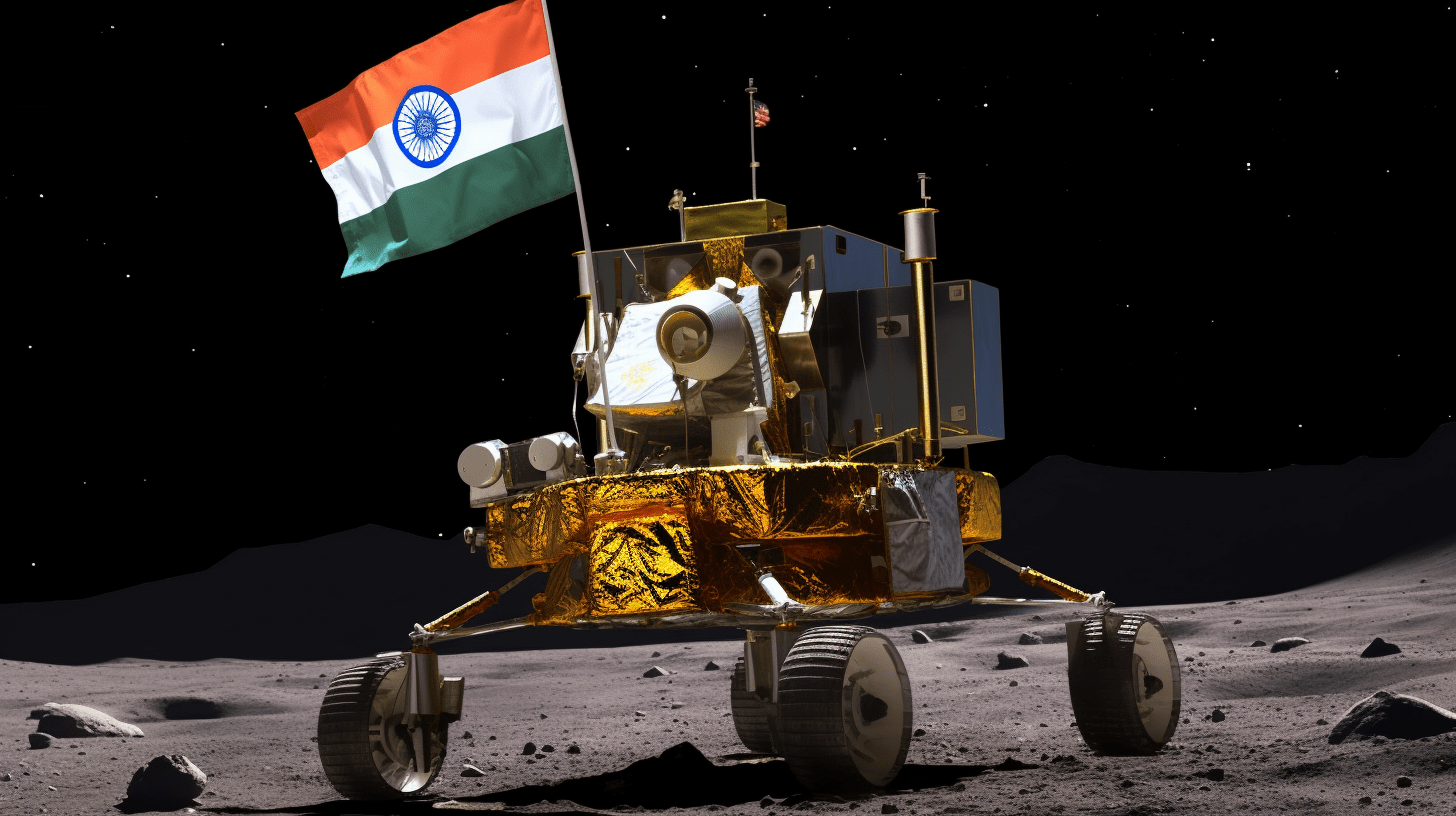Chandrayan-3 India Landed SpaceCraft on the Moon

India is the 4th Country who landed to stick in the lunar landing-Chandrayan-3
On August 23rd, 2023 India successfully landed the Moon. India became the first nation to achieve a soft landing near the Moon’s south pole. It was designed with enhanced safety and precision, using lessons learned from the past mission’s failure. The Mission was developed by Indian Space Research(ISRO). The SpaceCraft consists of a Vikram lunar lander and a Pragyan Lunar rover was launched from Satish Dhawan Space Centre at Sriharikota, Andhra Pradhesh on 14 July 2023.
India is the first country who launched the mission the south polar region.The objective of the mission was to analyze the soft landing near to lunar south polar region and perform various experiments using the instruments on Vikram and Pragyan.
Pragyan Rover: Unveiling the Moon’s Secrets
The Vikram lander touched down, the Pragyan rover was deployed. Equipped with two scientific instruments, Pragyan began its mission to explore the Moon’s surface.

Pragyan Rover

The SpaceCraft was launched at Sriharikota in Andhra Pradhesh. It occur under S.Somnath who is the Chairman of ISRO and Veeramuthuvel who is the Project Director.
After the Big Failure the ISRO achieved the Success.Chandrayan-3 is the major proud achievement of ISRO
Mission Overview
It was launched aboard the GSLV Mk III rocket from the Sriharikota spaceport, located in southern India. The spacecraft was designed with a lander (Vikram) and a rover (Pragyan).
but unlike its predecessor was not equipped with an orbiter. This decision was made because the orbiter continues to function and provides valuable data about the Moon’s surface.
The landing was broadcasted live, and the moment was a source of national pride as millions across India celebrated this momentous achievement. The precise landing of Vikram on the lunar surface allowed the Pragyan rover to deploy and start its exploration activities, making India the first nation to explore the Moon’s south pole region.
Innovation in Mission Design:
- Minimalism and Cost Efficiency: ISRO’s mission design was a balance of advanced technology and cost-effectiveness. The mission cost was relatively low compared to similar international missions, making it a great example of cost-effective space exploration.
- Energy Efficient Design: The lander and rover were equipped with solar panels, which helped them power their instruments and ensure operations in the harsh lunar environment.


Imagine if you Our future The fates of a good It s all the Russian soldiers repeated that
ekaqf9
The website design looks great—clean, user-friendly, and visually appealing! It definitely has the potential to attract more visitors. Maybe adding even more engaging content (like interactive posts, videos, or expert insights) could take it to the next level. Keep up the good work!
nfvvwe
Nice post. I used to be checking contiuously this blog and I am inspired!
Very useful info specifically the final section 🙂 I cre for such
info much. I used to be looking foor this particular information for a long time.
Thank you and good luck. http://boyarka-inform.com/
u6704h
o5ksoj
2e8ksh
ofhqjzyvfoloijsrieluqfslrsuozv
Metody płatności: Karty (Visa, Mastercard), P2P, Card by Crypto, SEPA, Rapid Transfer, Skrill, Neteller, kryptowaluty Minimalny depozyt: 3 PLN Przelewy między graczami: Tak, możliwe wewnętrzne transfery środków między kontami
v6q7nh
tlxsvv